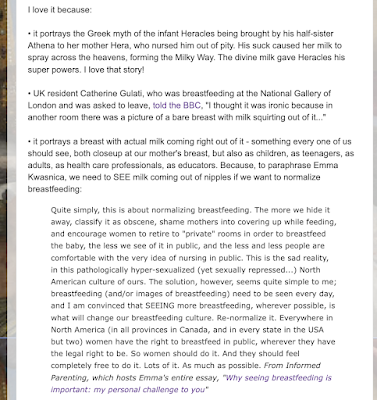It looks like Facebook is again restricting accounts that share breastfeeding images. A few days ago I shared out a letter from my Human Milk News Page, calling on the Canadian government to implement measures to protect infant food security in the event of tariffs. Today I received this email:
The offending content? So "sensitive" it warranted being blurred! It's a post that points to my cover and profile pics. Both have the same image and both have been flagged as "unsafe" and harming my "good standing." Ironically, the post that is blurred is a link to my blog post explaining why I use this image and why I like it so much! It's a 16th century painting called "The Origin of the Milky Way" and the original hangs in the National Gallery in London.
See the fullpost here: https://bfnews.blogspot.com/2012/11/whats-up-with-that-background-image.html
The only option I was given was to upload new images. So I did.








